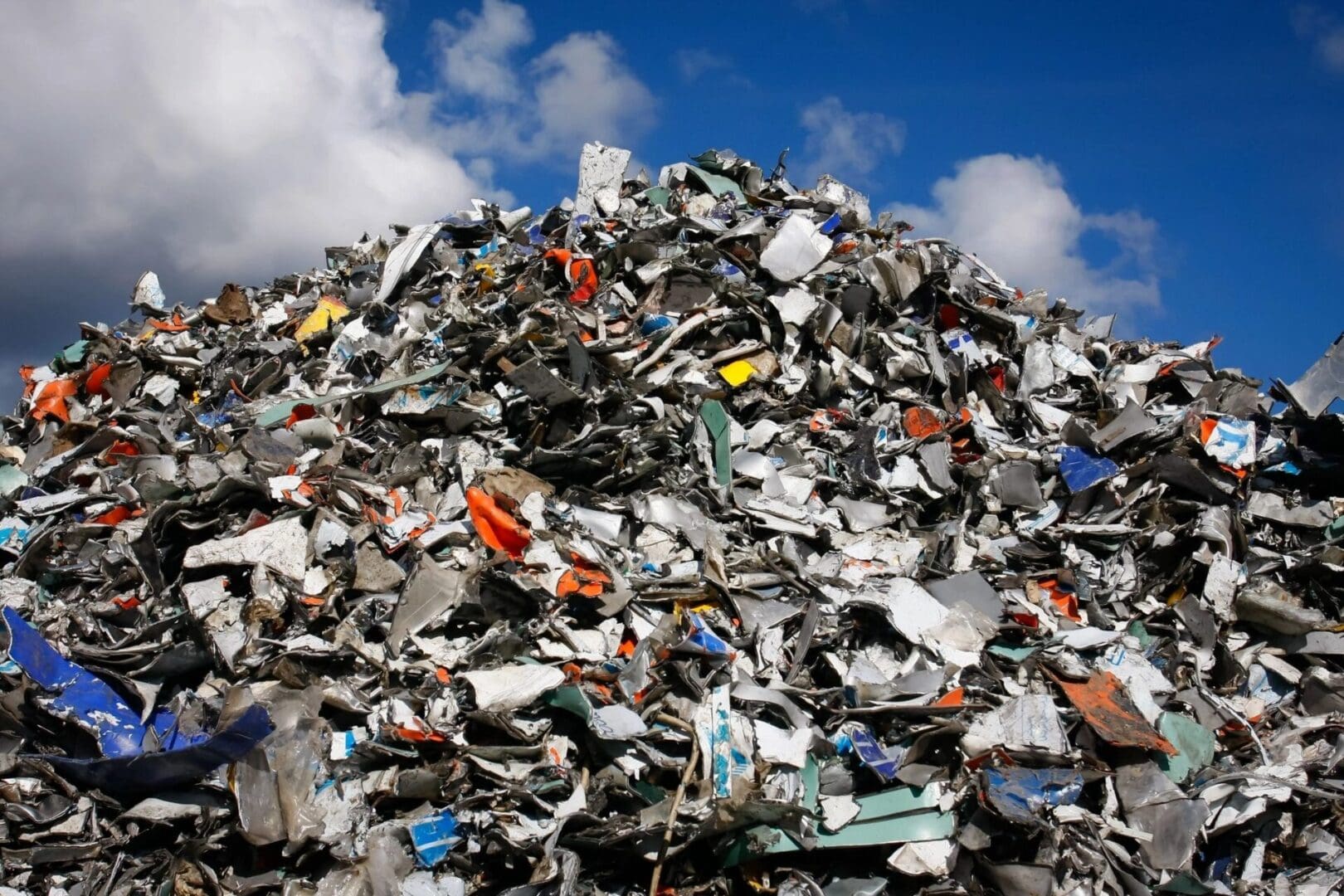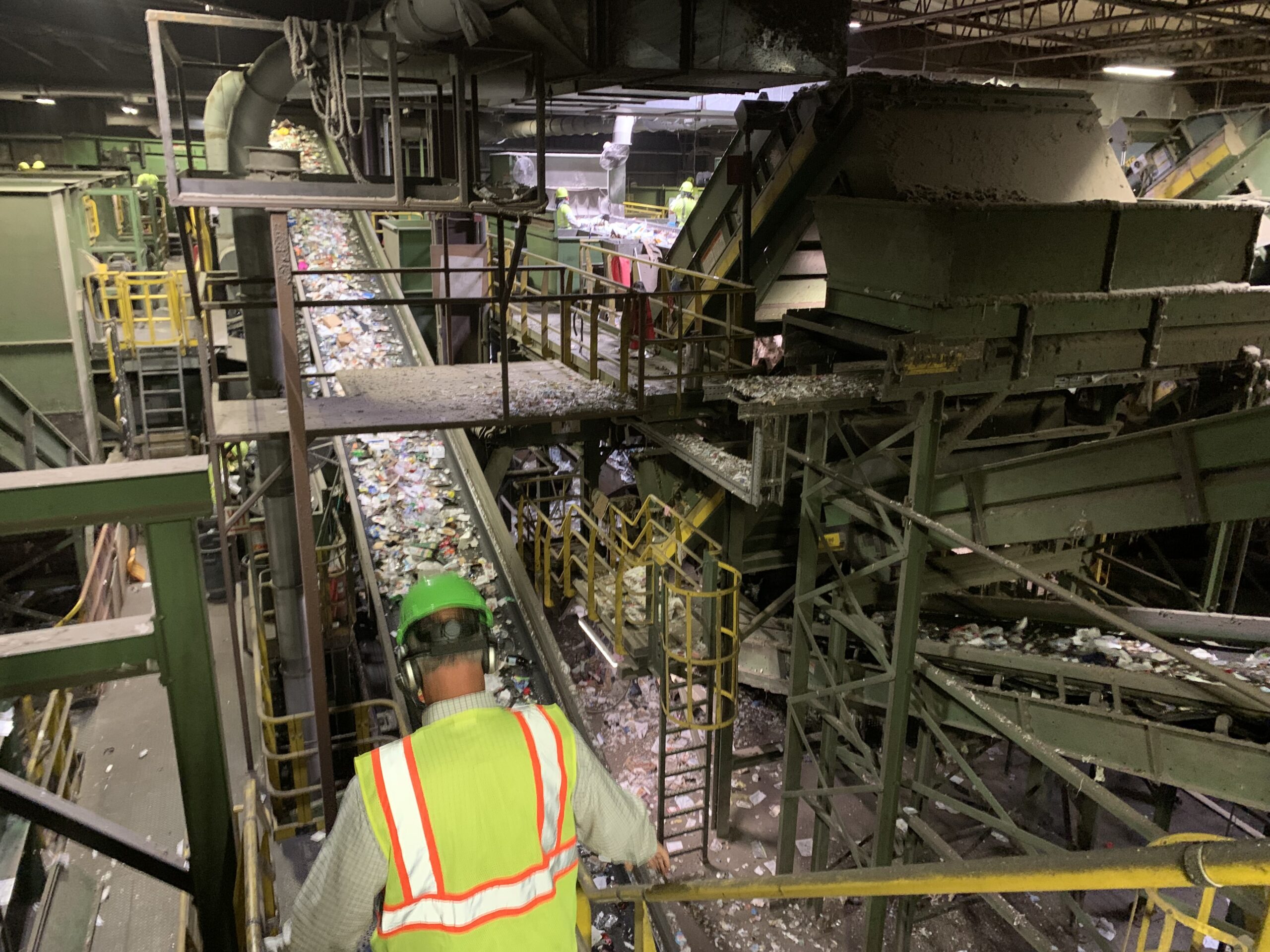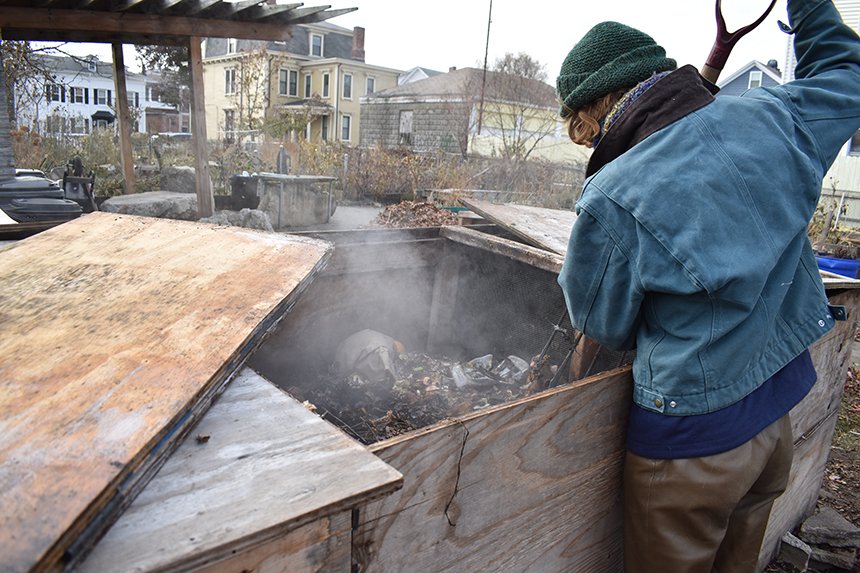Search Posts
Recent Posts
- Senior Agenda Coalition of RI pushes wealth tax to fund programs for older residents – Herb Weiss June 2, 2025
- How will Artificial Intelligence (AI) impact the future of work – Mary T. O’Sullivan June 2, 2025
- Real Estate in RI: Tiverton contemporary for $1.27M June 2, 2025
- Our Networking Pick of the Week: Coffee Hour at Provence Sur Mer, Newport June 2, 2025
- Rhode Island Weather for June 2, 2025 – Jack Donnelly June 2, 2025
Categories
Subscribe!
Thanks for subscribing! Please check your email for further instructions.

Rhode Island’s last landfill is running out of room – ecoRI News
There’s no clear answer to what happens next

by Rob Smith, ecoRI news staff
Less than 5 miles west of downtown Providence lies the state’s biggest ticking clock. It’s not a real timepiece, it doesn’t tell you the time of day, although it’s not dissimilar to the sand that fills up an hourglass.
Spread across 1,200 acres off Interstate 295 is a series of misshapen hills in an unusual shade of green. Passersby approaching from the west might be confused about what’s there, until they see the industrial equipment and dump trucks discharging mountains of trash.
The Central Landfill, owned and operated by the euphemistically named Rhode Island Resource Recovery Corporation (RIRRC), is the state’s largest and only remaining waste disposal site. It serves the waste needs of about 97% of the state, handling trash, recycling, electronic waste, and even yard debris.
Other states may have waste-to-energy plants, trash incinerators, or other environmentally questionable methods of dealing with their trash. For the past four decades, Rhode Island has dug an enormous hole, filled it with trash, and capped it using the latest in landfill-containment technology.
Every day, 2,200 tons of trash is delivered to the landfill. According to its budget documents, the landfill uses a protective baseliner, leachate treatment, and a capping system to ensure the trash contained in the landfill stays there.
But now, 40 years and six site expansions later, the Central Landfill is running out of room. In just about 20 years, Rhode Island will have to find somewhere else to dump its trash.
“Our latest budget estimates the landfill will reach its permitted capacity in 2046, roughly two decades from now,” said Jared Rhodes, director of programs for RIRRC. “To compare, our 2019 budget estimated it would reach capacity in 2033.”
Rhodes said RIRRC has begun revising its pricing strategy to incentivize commercial waste operators, such as construction and demolition companies, to dispose of their debris elsewhere. It seems to be helping. According to the corporation’s records, the landfill has seen a reduction in the amount of material sent to the landfill, from 517 kilotons in 2019 to 132 kilotons last year.
“It’s the drop in these wastes that’s the primary driver for the increased life expectancy of the landfill,” Rhodes said.
What’s in your trash can?
Rhode Islanders throw away pretty much everything. A 2015 waste characterization study commissioned by RIRRC shows that the greatest share of trash thrown away is vegetative food waste. Roughly 16% of that, or 108,800 tons, could be either composted or anaerobically digested instead of buried in the landfill, according to the study. Nationwide, around 24% of all landfilled materials are food waste, according to the Environmental Protection Agency.
Rhode Islanders also throw away a lot of recyclables. The 2015 study found that around 10% of the waste buried in the landfill were items that could potentially be recycled.
A 2023 study by RIRRC and the state Department of Environmental Management showed that out of the four materials able to be recycled — plastic, glass, fiber, and metal — only glass was successfully recycled more often than it was disposed in the landfill.
Recycling rates for every city and town in Rhode Island remain far lower than the goals set out by the General Assembly. In 2023, only 15 of the state’s 39 municipalities met or exceeded the 35% recycling rate mandated by a 2012 state law. Overall waste diversion was worse; the same law requires municipalities to divert at least 50% of waste sent to the landfill, but only two towns — North Kingstown and Portsmouth — meet the requirement.
It’s a problem shared nationwide. The average American producers around 4 pounds of trash every day, and at least a pound of that is food waste. Composting, without lawmakers implementing new recycling programs, might be one way the state can work to reduce the trash sent to the Central Landfill.
A 2022 analysis by DSM Environmental modeled different ways in which Rhode Island municipalities could add food waste collection to conventional curbside pickup, including: collecting food waste separately; having trucks configured to collect food waste, regular waste, and recycling; collecting mixed solid waste together; and bagging food waste in separate bags.
Under the analysis, Rhode Island could divert up to 41,000 tons of food waste from being landfilled annually. But there are drawbacks.
The study solely examined curbside collection and excluded any costs to RIRRC to manage the food waste. As shown with recycling, if municipalities aren’t properly separating recycling from their waste, Resource Recovery can do little to improve recycling rates after the fact. And separating food waste is key to ensuring it doesn’t end up buried in the landfill.
Sintana E. Vergara, an associate professor of environmental resources engineering at California State Polytechnic University, Humboldt, said it’s most challenging to process waste when it’s all mixed together.
“If we’re able to separate our waste into parts, our organic waste is separated from paper and landfilling waste, it’s a lot easier to reuse parts of the waste,” Vergara said. “Once they’re all mixed together, it really becomes trash and becomes difficult to recycle, to compost, to get beneficial use out of these products.”
Sorting is the most important thing for municipalities to do, according to Vergara. Composting food waste comes with the option of selling the product to whoever is in the market for compost. But the quality of the compost relates directly to the quality of the waste being composted.
“If you have a mixed waste input,” Vergara said, “you’re going to get a mixed bag of compost that will be difficult to market and difficult to use and farmers won’t want to apply it on their lands.”
The food waste diversion possibilities outlined by DSM Environmental are also likely to cost households more. The scenarios laid out in the analysis, together with no interruption in traditional curbside collection for trash and recycling, estimate an increased annual cost of $24 to $76 per household.
DSM Environmental noted that two scenarios — collecting food waste in addition to existing curbside collection, and alternating food waste collection and traditional refuse and recycling pickup every other week — would cost between $17 million and $21 million annually.
How does that compare to current collection costs? Not great. The 25 municipalities providing curbside trash service spend about $20.7 million to collect and send their waste to the landfill every year. The 27 municipalities that provide curbside recycling spend another $15.6 million annually.
The analysis was also skeptical about the benefits to landfill capacity, estimating that the various scenarios would only result in a 14% reduction in landfilled waste.
“The reality is much of the food waste will be significantly reduced by anaerobic activity in the landfill, so that the volume of landfill savings will likely be less than one-half of the as-delivered rate, or roughly 5 to 7 percent,” according to the DSM Environmental report.
Rhode Island’s trashy past
The modern history of Rhode Island’s waste operations, and the Central Landfill, date back to the early 1970s. Prior to its creation, Rhode Island’s 39 cities and towns relied mainly on local landfills for their trash. But spurred by the burgeoning environmental movement of the 1960s and ’70s, public officials started to get serious about trash. At the time, those landfills were starting to run out of room, or towns were ponying up a pretty penny to truck their garbage out of state.

According to reports in The Providence Journal, an environmental task force created by Gov. Phillip Noel pushed the General Assembly in 1974 to create what was called the Solid Waste Management Corporation, the precursor to the quasi-public RIRRC.
The legislation called for a $1.7 million loan, around $9 million in today’s dollars, to get started on “planning an integrated statewide system of centers where local solid waste would be brought for separation of recoverable resources, recycling and burial of the residue.”
In the tradition of many new initiatives passed by the General Assembly, the corporation was created without any funding. Instead, lawmakers put funding the new waste corporation on the ballot the following November.
Without or without funding, it would be years before the corporation resembled the quasi-public waste agency we know today.
It wasn’t until 1981 that the corporation found a suitable site to buy, the Silvestri Bros. landfill, which had previously been a quarry. The corporation bought the Johnston plot, now referred to as the Central Landfill’s Phase 1 site, for the cool price of $10.1 million in December.
That same year, the General Assembly passed the first statewide mandatory recycling law, and the Materials Recycling Facility at the Johnston landfill site opened in 1988. The original unlined dump, known as Phase I, was closed in 1993, and an expansion of the landfill, with proper lining and sanitation, opened later that year.
The Central Landfill’s environmental hazards, and status as a Superfund site, primarily come from the unlined landfill and what was getting buried in the Phase I section of the site. A 1984 EPA press release announced monitoring wells at the site of Phase I showed the continued presence of hazardous waste in groundwater, private wells, and a nearby stream.
Meanwhile, as town-owned landfills began filling up, and the General Assembly passed additional mandatory waste diversion laws, these local waste disposal sites became something of an odd relic.
Some have been capped and reused. Cranston’s landfill, just off Pontiac Avenue, is itself an EPA Superfund site. Today, after decades of investigating, remediation, and capping, it’s home to a 3.5-megawatt solar array.
Tiverton’s landfill, the last of the local waste disposal sites that used to dot Rhode Island’s cities and towns, closed in 2022, nearly 50 years after state officials began the process of centralizing waste disposal.
Rhode Island’s trash future
So, we know one day the Central Landfill will be full. The last dump truck will discharge its final load of garbage, and RIRRC workers will cap their final portion of the landfill.
Then what?

(Grace Kelly/ecoRI News)
RIRRC has historically laid out three separate choices for policymakers, although no state official has engaged with, or committed to, any of them. The short list is: expand the current landfill; build a new landfill somewhere else in Rhode Island; or pay to ship the trash out of state, as local landfills were beginning to do when RIRRC was created.
Expansion would prove the easiest option, although according to its own planning studies, the corporation has no plans for another phase of the Central Landfill. In a 2018 long-term planning study, the corporation noted expanding the current landfill would be the most cost-effective option, costing somewhere between $33 million and $130 million in capital costs alone, but it would require lawmakers to legalize further landfill expansion.
“There is a risk of relying on this option as facility expansions are not guaranteed and are typically not accepted by local communities,” according to the study. “There will be a point where no additional expansions are possible leaving the Corporation, and the State, in a position where their only option will be to cease accepting waste or develop an alternative disposal method.”
Finding a new site is also an option, although unlikely. There hasn’t been a new landfill site developed since 1995, and it’s unlikely any city or town in Rhode Island is going to volunteer itself to be a new landfill host for the state. After expanding the current site, it’s the second-cheapest option, estimated to cost somewhere between $48 million to $190 million, and it would take over a decade to implement.
Barring breakthroughs in waste disposal technology, shipping garbage out of state to other landfills remains a likely option. In RIRRC’s long-term study, the corporation noted the state can transport its waste elsewhere either by truck or rail, carrying between 88 and 100 tons of waste per rail car. It will cost roughly the same in capital costs, according to the report, but will cost more per ton over time.
Expanding the landfill or making a new one will keep per-ton costs for waste low, between $35 and $40. Sending it out of state via railcar will cost nearly three times as much, around $89 to $100 per ton, depending on the tipping fees of the facility accepting the waste.
The state could also build new facilities: anaerobic digestors to handle organic and food waste, or waste-to-energy plants. But there already is an anaerobic digestor facility abutting the Central Landfill, and technologies like waste-to-energy facilities are prohibited in Rhode Island by state law.
“At some point the Central Landfill will reach its ultimate capacity and by that time, an emerging technology may have proven itself at the capacity and reliability needed by the Corporation,” according to the 2018 report. “If not, the Corporation will face the decision to develop a new landfill, haul waste to an out-of-state landfill, develop a modern waste-to-energy facility, or cap and close the landfill and allow the private sector to manage all of Rhode Island’s wastes.”

This article is printed in publication partnership with ecoRI.org, a fellow member of the Rhode Island News Collaborative
This story is the first in a series “Black Gold Rush: The Race to Reduce Food Waste and Save Soil.”
The series is sponsoredby11th Hour Racing.
